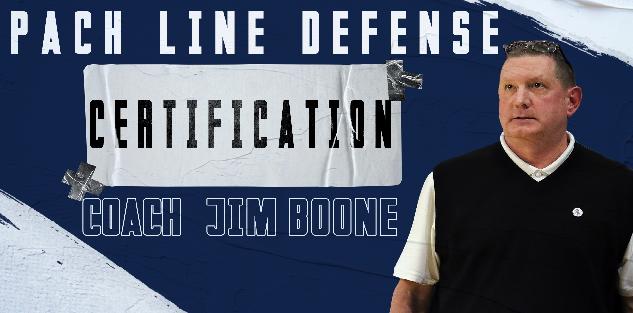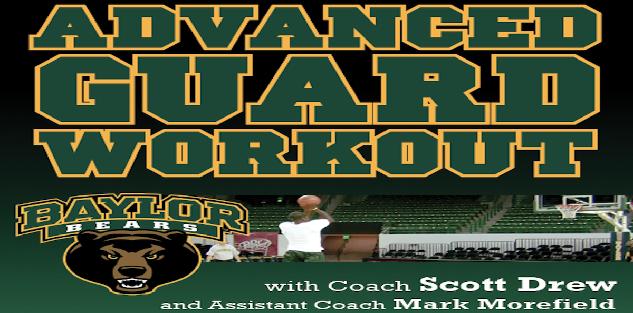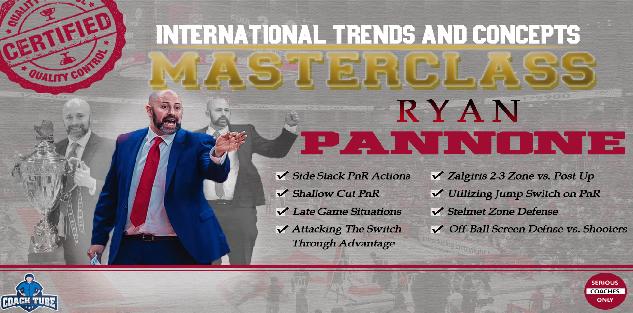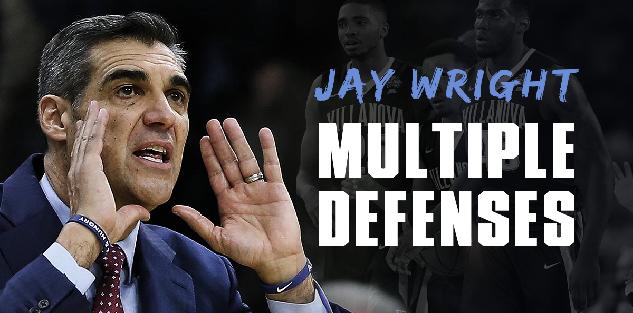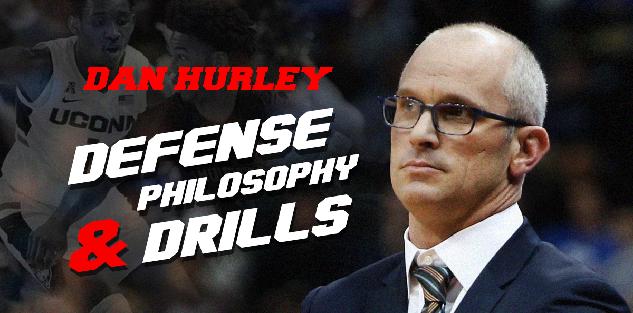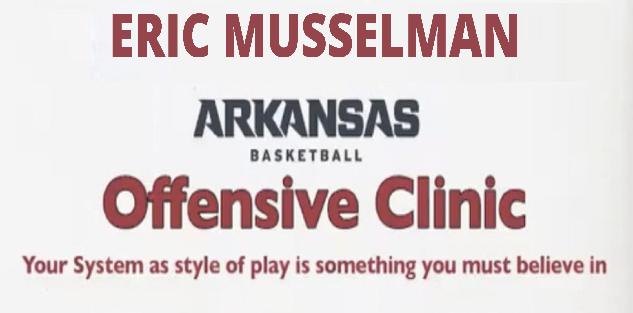Featured courses
- Two Great Game Situational Workouts For the Basketball Offseason by Grant Young
- Two Reads Basketball Players Must Understand Before Executing the Ball-Screen by Grant Young
- Two of LSU Coach Kim Mulkey’s Game-Winning Inbounds Plays by Grant Young
- Three Effective Early-Season Defensive Basketball Drills by Grant Young
- Four Essential Tips For Basketball’s 1-3-1 Zone Defense by Grant Young
- Four Zone Defense Drills to Strengthen Your Team by Grant Young
- How to Beat the Three Most Common Pick and Roll Coverages by Grant Young
- Two Drills to Improve Shooting at the Start of the Basketball Season by Grant Young
- Core Basketball Principles That Dallas Mavericks Coach Sean Sweeney Teaches by Grant Young
- Three Competitive Shooting Drills For Your Basketball Team by Grant Young
- How To Teach The ‘I’ Generation of Basketball Players by Grant Young
- Three Elite Drills to Begin a Basketball Practice With by Grant Young
- How to Build a Championship-Winning Basketball Team Culture by Grant Young
- Two of Texas Women’s Basketball Coach Vic Schaefer’s Tips For Team Culture by Grant Young
- Atlanta Dream WNBA Coach Brandi Poole’s Four Sets for Secondary Offense by Grant Young
- NC State Basketball Coach Brett Nelson’s 4 Crucial Point Guard Qualities by Grant Young
- Kentucky Coach Mark Pope’s Five Guard Rules For Offense by Grant Young
- McNeese State Basketball Coach Will Wade’s 4 Core Pillars by Grant Young
- 4 Tips To Instantly Improve Your Free Throw Shooting by Tyler Linderman
- Assemble a Championship-Caliber Basketball Rotation by Brandon Ogle
- Two of UConn Coach Dan Hurley’s Key Defensive Drills by Grant Young
- Four Post Moves All Basketball Forwards Should Have In Their Bag by Grant Young
- Four of Baylor Coach Nicki Collen’s Midseason Pick and Roll Adjustments by Grant Young
- WNBA Legend Sue Bird’s Two Tips For Attacking on Offense by Grant Young
- Houston Coach Kelvin Sampson’s Three Keys for Building a Basketball Program by Grant Young
- Two of Tom Izzo’s Top Michigan State Defensive Drills by Grant Young
- Four of Olympic Gold Medalist Coach Mechelle Freeman’s Relay Race Strategies by Grant Young
- Three Key Strategies Will Wade Uses to Build a Dominant Team by William Markey
- Five UConn Huskies Men’s Basketball Plays That You Can Use by Grant Young
- Three Tips for Maintaining Team Culture at the End of a Basketball Season by Grant Young
- Three Dribble Drive Motion Drills to Teach Your Basketball Team by Grant Young
- Three Dribbling Drills For Non-Primary Ball Handlers by Grant Young
- Four Advanced Ball Handling Drills For Basketball Guards by Grant Young
- Three Tips to Sharpen Your Post Player’s Footwork in Basketball by Grant Young
- These Three Pick and Roll Drills Are Crucial For Any Ball Screen Offense by Grant Young
- Three Closeout Drills to Improve Basketball Shooting Defense by Grant Young
- Three Tips to Perfect the Packline Defense in Basketball by Grant Young
- Four Keys to Executing the Read and React Offense in Basketball by Grant Young
- Three Tips to Develop Elite Basketball Shooters by Grant Young
- Three Crucial Keys to Executing the 5 Out Offense in Basketball by Grant Young
- These Three Offensive Sets Will Help You Beat Any Zone Defense by Grant Young
- Three Transition Basketball Drills To Play With More Pace by Grant Young
- Three 5 Out Offense Drills Any Basketball Coach Can Use by Grant Young
- Four Vital Techniques for a Motion Offense in Basketball by Grant Young
- Three Baseline Inbounds Plays To Win Your Basketball Team Games by Grant Young
- Four Drills For Sharpening the European Ball Screen Offense by Grant Young
- Three Positioning Tricks For a Basketball Zone Offense by Grant Young
- Three Rules to Perfecting Basketball's Lock Left Defensive System by Grant Young
- UCLA WBB Coach Cori Close’s Two Keys to Winning the Mental Game by Grant Young
- Four of Alabama Coach Nate Oats’ Favorite Basketball Drills by Grant Young
- Three Ways To Turn Transition Offense in Basketball Into Points by Grant Young
- Three Drills to Master Basketball's Pack Line Defense by Grant Young
- Three Transition Defense Drills to Halt Fast Breaks by Grant Young
- Four Offensive Rebounding Drills to Win Second Possessions by Grant Young
- 4 Defensive Technique Drills from Boston Celtics Assistant Coach Brandon Bailey by Marek Hulva
- 5 Drills to Improve Ball Handling by Tyler Linderman
- 13 FUNNY BASKETBALL GIFS by Alex
- BASKETBALL SPEED AND AGILITY: 8 QUESTIONS FOR COACHTUBE EXPERT RICH STONER by Jaycob Ammerman
- Defensive Strategies for Basketball by Ryan Brennan
- 4 Keys To Turning Your Program Into Championship Contender By Dallas Mavericks Coach Sean Sweeney by Marek Hulva
- 5 Components to Creating a Winning Basketball Program by Justin Tran
- Guide to Becoming a Lethal Scorer in Basketball by Justin Tran
- Zone Defense In the NBA Eastern Conference Finals by James Locke
- Mastering Court Mobility: Tips for Effective Movement in Basketball by Justin Tran
- 5 Basketball Shooting Drills: How to Develop a Sharpshooter by James Locke
- 6 Points of Emphasis for a Successful 5 Out Offense by Jaycob Ammerman
- Effective and Efficient Methods to Practice During the Basketball Season by Justin Tran
- Three Great Passing Drills From a Basketball Coaching Legend by Grant Young
- 7 Principles For Perfecting the Princeton Offense in Basketball by Grant Young
- How to Replicate A Modern NBA Offense by Grant Young
- Three Great Two-Ball Dribbling Drills For Basketball Development by Grant Young
- Two Rebounding Drills to Win Your Basketball Team Championships by Grant Young
- How to Improve Your Basketball Team’s Defense With the Shell Drill by Grant Young
- How Baylor Basketball’s Scott Drew Develops Elite Guard Play by Grant Young
- Off-Ball Movement Tips and Strategies: Lessons From the NBA Finals by James Locke
- Player Development: Scott Drew’s Tips for Producing NBA Guards by James Locke
- How to Execute a Spread Offense in Basketball by Grant Young
- Four Quality Quotes From Four Final Four Coaches by Grant Young
- A Guide to the Pack Line Defense by Alex Martinez
- 3 Defensive Build Up Drills to Improve Team Basketball Defense by Grant Young
- Battle of Two Great Coaches: Best Plays from the NBA Finals Contenders by Justin Tran
- 10 Creative Ways Athletic Programs Can Use a Video Board to Raise Money by Coach Williams
- How to Use 3 on 3 to Improve Your Basketball Team by Grant Young
- How to Defend the Pick and Roll by Grant Young
- Mastering Basketball Defense: Techniques, Drills, and Strategies for Success by Justin Tran
- Three Tips From The Coach Who Developed Giannis Antetokoumnpo by Grant Young
- 2023 NBA Draft: Skills and Technique from Top Prospects by Justin Tran
- From College to the Pros: Transitioning the Dribble Drive Offense by Justin Tran
- Positionless Basketball: Redefining Roles on the Court by Justin Tran
- Revolutionize Your Offense: Proven Concepts to Elevate Your Basketball Game by Justin Tran
- 5 Essential Fastbreak Drills Every Basketball Coach Should Know by James Locke
- How to Run a Circle Offense in Basketball by Grant Young
- Game-Changing Strategies: ATO Plays in the EuroLeague and Olympics by Justin Tran
- How to Stand Out at Basketball Tryouts by Grant Young
- How to Improve Your Basketball Team’s Transition Defense by Grant Young
- Indiana Fever GM Lin Dunn’s Two Keys For Women’s Basketball Coaches by Grant Young
- Strength Training Strategies Every Basketball Player Should Have by Grant Young
- A WNBA Basketball Coach’s Four Priorities In Transition Defense by Grant Young
- Three Adjustments to Make When Your Basketball Offense Isn’t Working by Grant Young
- Three Pillars to Applying Defensive Pressure on the Basketball Court by Grant Young
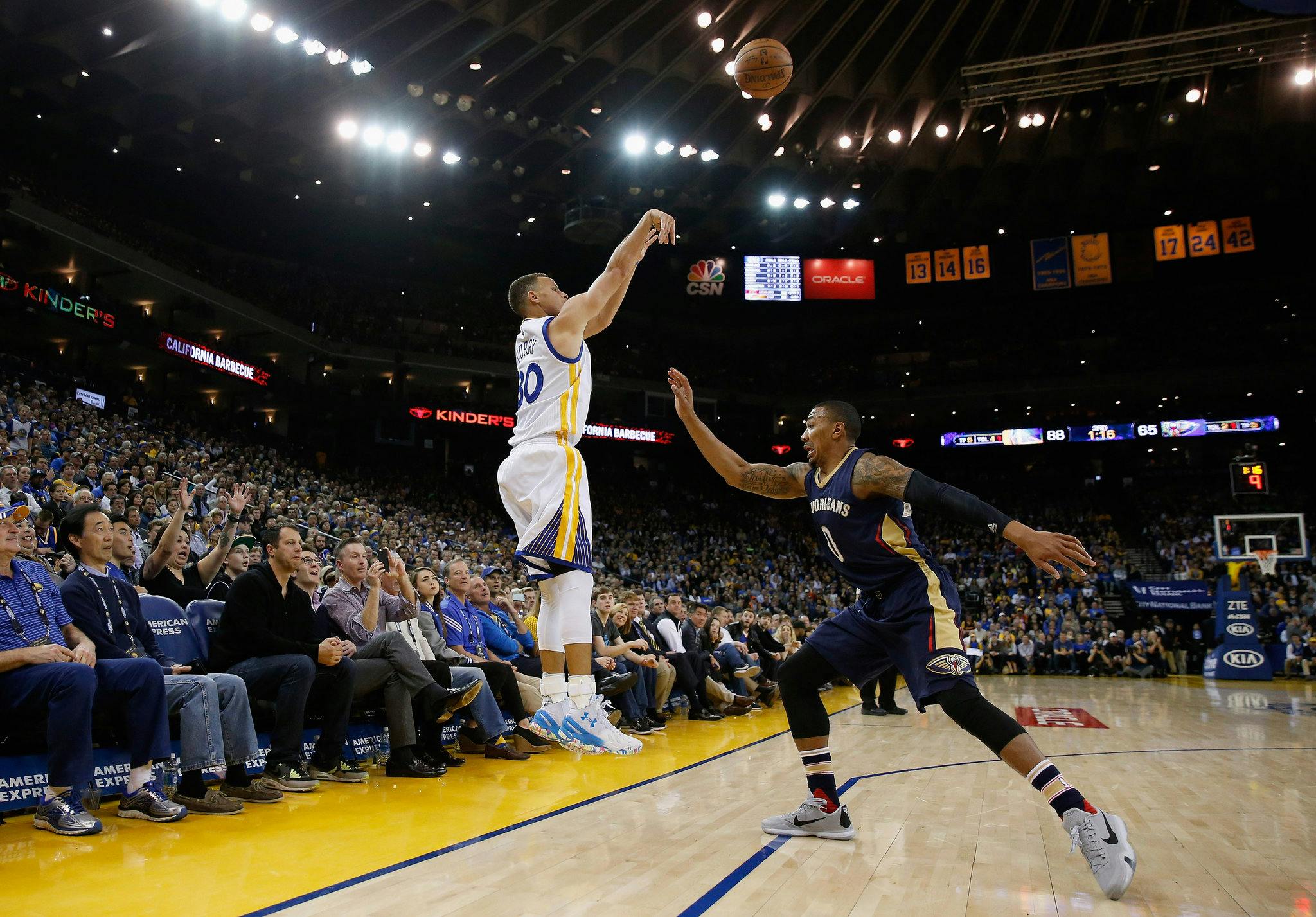
How to Run a Circle Offense in Basketball
- By Grant Young
Basketball offensive philosophies have undergone multiple complete makeovers over the past few decades.
Perhaps the most influential shift came by way of the Golden State Warriors, during their four NBA Championship title victories from 2015 to 2021. Seeing the sharpshooting “Splash Brothers” Steph Curry and Klay Thompson open up the floor and make the Warriors the most lethal, efficient, and aesthetically pleasing basketball many people have ever seen in their lives.
And this prompted the next generation of basketball players to fall in love with the three-pointer, which is already creating a massive offensive shift in the game’s youth levels.
But what if the three-pointer wasn’t the actual key to the Warriors’ mesmerizing offensive success? Don’t get me wrong; Curry and Thompson being wizards from three-point range is a huge reason for their success. But head coach Steve Kerr’s offensive strategy made it possible for the Warriors to score in bunches even when his shooters weren’t shooting well.
How did Kerr do this? By utilizing schemes inherent to the circle offense.
And very few coaches know the ins and outs of the circle offense better than Steve Gomez.
Coach Gomez recently concluded his 21st season at the helm of the Lubbock Christian University women’s basketball team, and the 11th season at the NCAA level. He opens the campaign with a 500-143 record, which includes a 24-3 record in NCAA postseason play.
In his first 10 seasons at the helm, as LCU was an NAIA institution, the Lady Chaps made 10 consecutive trips to the NAIA Division I Women’s Basketball National Championship Tournament. But Coach Gomez’s astounding success (namely on offense, by utilizing the circle offense) convinced officials that his team should join the Division 2 ranks. And that’s where Coach Gomez remains today.
Coach Gomez’s ‘Circle Offense’ course divulges the most important teaching point about installing this strategy into your own offense. It lays the groundwork for how to turn any stagnant offense into a fluid, rhythmic scoring machine that doesn’t need players like Steph Curry or Klay Thompson to thrive.
Why Circle Offense?
Before getting into the specifics, let’s start with exactly what a circle offense is, and what it entails.
The circle offense utilizes cuts and continuity patterns to create scoring opportunities near the basket.
Additionally, the circle offense features five players which fill five perimeter spots near the top, the wings, and the corners.
The main premise behind the circle offense is to have at least three players in constant motion at all times, ideally doing some form of screening, cutting, or otherwise moving without the ball. The reason for this is that it often leads to a breakdown in communication within defenses, which incites chaos (and easy baskets).
The circle offense is particularly effective with smaller, guard-centric teams, and teams who have elite shooting because of the spacing opportunities that it provides offenses.
Sample 1
Coach Gomez relays some excellent points about why to run a circle offense, and how you can utilize it to be beneficial for whatever roster composition you’re currently working with during any given year.
One of the best parts about running a circle offense is that it creates both a pattern and set sort of offense, and also allows for what Coach Gomez calls “freelance” opportunities.
In other words, there is a solid foundation to the circle offense. There are specific play sets that can be drilled in practice and that should create consistent, steady looks during games. This is crucial because, as I alluded to earlier, it’s tough for a team to consistently succeed if they have to rely on their outside shooters catching fire. So with a playbook of set plays that can be turned to in crunch time, when a basket is direly needed, the circle offense comes in handy.
But Coach Gomez also references these “freelance” opportunities, which are the times when your players’ talents and skillsets can shine. Back to the Warriors example, this is what Steph Curry or Klay Thompson would whip up their specific sort of magic and drain a deep three-pointer, despite the excellent defense against them.
Although this doesn’t have to be just deep shooting. If you have a post player who is a beast on the block or a guard who specializes in slashing to the rim and getting fouled, they’ll have plenty of opportunities to execute their games to a tee in the circle offense.
This malleable style is why the circle offense has been so useful for so many different teams.
Baseline Drive Reactions
An imperative part of finding success with the circle offense is winning the battle on the baselines.
Much of the circle offense’s crucial action (such as back cuts and off-ball movement) takes place along the baseline in every possession. In addition to this meaning that having shooters who are good at making midrange and three-point jumpers from the corner is a huge benefit, Coach Gomez stresses that instilling the importance of backside baseline reactions will free your circle offense up for a lot of success.
This means that, when one of the guards is driving to the basket, whichever players (likely two) are along the baseline will have multiple options as to how they can help support.
They can either fade out to the backside corner to be available for a kick-out jump shot, move up to the wing to prepare for a kick-out jump shot, clear out then prepare to crash the board in case the driving guard goes for a layup, or if they’re on the weak side, flash to the basket along the baseline in hopes for an easy layup.
This is just one example of the various opportunities that the circle offense can (and will) provide success to any coach who'll utilize it with their team.

